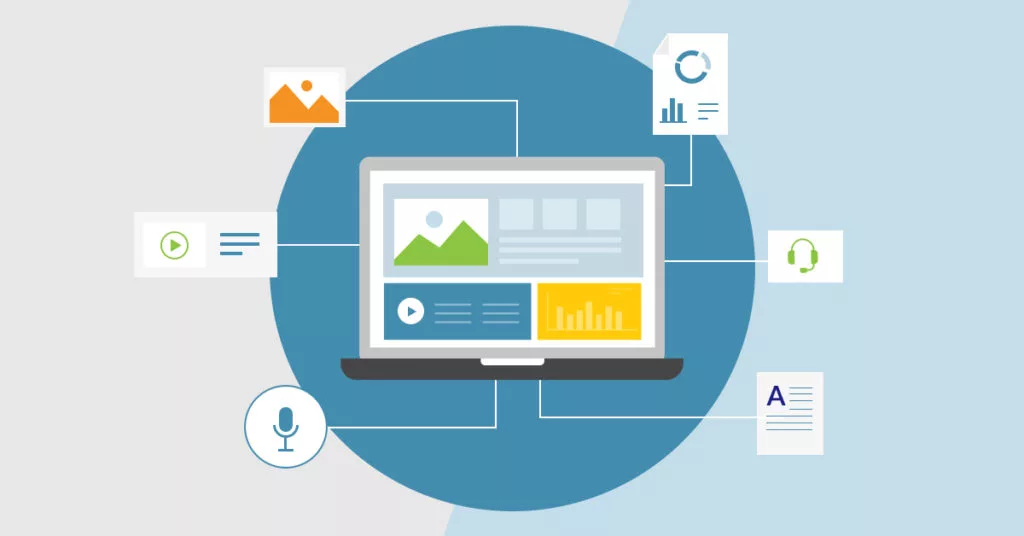Training approaches for businesses have changed greatly over the years. Working remotely has today become the new norm. But, companies still struggle to adjust to the change. One of the main challenges they face is providing efficient training and enhancing their remote employees’ skills. The conventional training method may not always be the best fit, considering that remote employees are scattered geographically and require adaptable learning approaches.
This is where you can trust microlearning as a powerful solution. Let’s look at how we can leverage our microlearning strategies to transform how we can educate and empower our remote workforce.
In This Article
The Rise of Remote Work and Its Training Challenges
Owing to the COVID-19 pandemic, the shift to remote work is here to stay. Most employees want to work from home or prefer a hybrid model nowadays.
Recent surveys show that 98% of employees desired to work remotely for the time being. One of the reasons it is widely accepted is flexibility and work-life balance, and it also reduces commuting stress.
Although remote work offers flexibility, businesses face issues providing training and development opportunities. Let us discuss how microlearning can help overcome these challenges.
1. Flexibility and Convenience
Microlearning allows teams working remotely to get the training they need whenever and wherever it suits them the best. This is especially helpful when team members might be spread across different time zones or have different schedules. Microlearning accommodates the flexibility that the modern remote work environment demands. It allows the users to be in command of things at their own pace and convenience.
2. Engagement and Retention
Microlearning modules are designed in such a way that they ought to be concise and focused, which makes them highly engaging and easy to absorb. Unlike traditional lengthy training sessions, microlearning provides remote employees with short and targeted nuggets of information.
This format aligns with our brain’s natural processes and retains knowledge. Remote learners stay actively engaged throughout the process because of its small content format. It also ensures that learners can dedicate their full attention to each module, maximizing their retention and understanding.
3. Easy Adaptability
Remote workers might juggle various responsibilities and distractions. Microlearning offers an intelligent solution to his challenge. Because of its concise format, employees can easily integrate short learning sessions into their schedules without feeling overwhelmed or exhausted. This adaptability supports continuous learning and helps them remember information better.
4. Reduced Cognitive Overload
With traditional training modules, we are given a lot of information all at once. This approach can sometimes lead to an overwhelming experience and requires more effort for learners to grasp and retain information.
Microlearning breaks down complex information into minor pieces, thereby making it easy to digest. Each chunk focuses on a specific content or skill, allowing learners to absorb information in smaller, more manageable portions. This way, it reduces the amount of mental effort a learner requires to process information.
5. Multiple Device Accessibility
When it comes to remote working, you will find a range of devices in play, from laptops to smartphones. They help team members stay connected, communicate, and collaborate from wherever they are.
Microlearning modules are specially designed to be flexible. They can adapt seamlessly to different sizes and resolutions. Whether someone is accessing them on a laptop or smartphone screen, the learning experience remains just as effective and user-friendly.
6. Cost-Effective
Compared to traditional training approaches, microlearning modules are cost-effective in many ways. It minimizes the need for physical learning materials and dedicated classroom spaces. With this approach, organizations with large employee numbers can save a lot of money.
Microlearning uses digital platforms and e-learning tools, dramatically reducing the use of printed materials and thereby paving the way to a better environment. Organizations can use this resource to enhance the quality of content and instructional designs, ultimately improving the learning experience.
7. Shorter Learning Curves
Microlearning offers bite-sized lessons that are easy to grasp and remember. That is why it is the best solution to provide training to remote working teams. It lets you dive straight into the subject’s core and reduce the time needed to learn new skills or gather vital knowledge.
Microlearning offers a flexible and accessible way for remote employees to access information whenever they need it.
8. Just-in-Time Learning
When an employee faces a tricky task or an unexpected challenge, they might have to dig through heaps of information. With microlearning, they can easily access targeted answers and guidance. Because of its easy access, employees can quickly go through the data and implement it in real-time. This way, they can save a lot of time, improve productivity, and sharpen their skills to handle problems. This just-in-time approach changes how employees work and learn in the digital age.
Strategies to Implement Microlearning for Remote Teams
Now that we understand the benefits of microlearning let us explore some strategies to implement this approach effectively:
1. Before creating microlearning modules, define clear learning objectives. Identify the knowledge and skills remote employees need to succeed in their roles.
2. When creating training material, divide it into small, logical sections. Each part should cover a single concept or skill. This helps learners use the information more effectively.
3. Engagement is most important in microlearning. Include multimedia elements like videos, quizzes, and interactive situations to make the content more engaging and effective.
4. Create a centralized knowledge base or learning platform where remote employees can easily access microlearning modules. Ensure that the platform is user-friendly and accessible on various devices.
5. Facilitate discussions and collaboration among remote team members. Encourage them to share insights and best practices related to microlearning topics.
6. Include assessments or quizzes at the end of each module to monitor understanding. Provide immediate feedback to help learners track their progress.
7. Microlearning content should stay relevant. Schedule regular reviews and updates to keep the training materials current and aligned with the necessary requirements.
8. Use analytics to track the effectiveness of your microlearning initiatives. Monitor engagement, completion rates, and knowledge retention to make improvements when needed.
Conclusion
Microlearning is an effective tool to bridge the learning gap among remote teams. It is flexible, keeps employees engaged, and perfectly suits remote employee’s needs. Businesses can make the most of microlearning, leading to better productivity and success in remote work.




